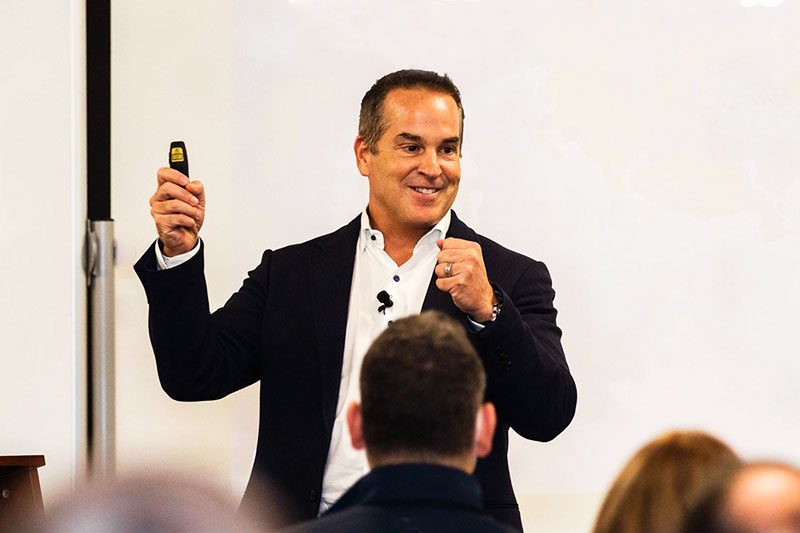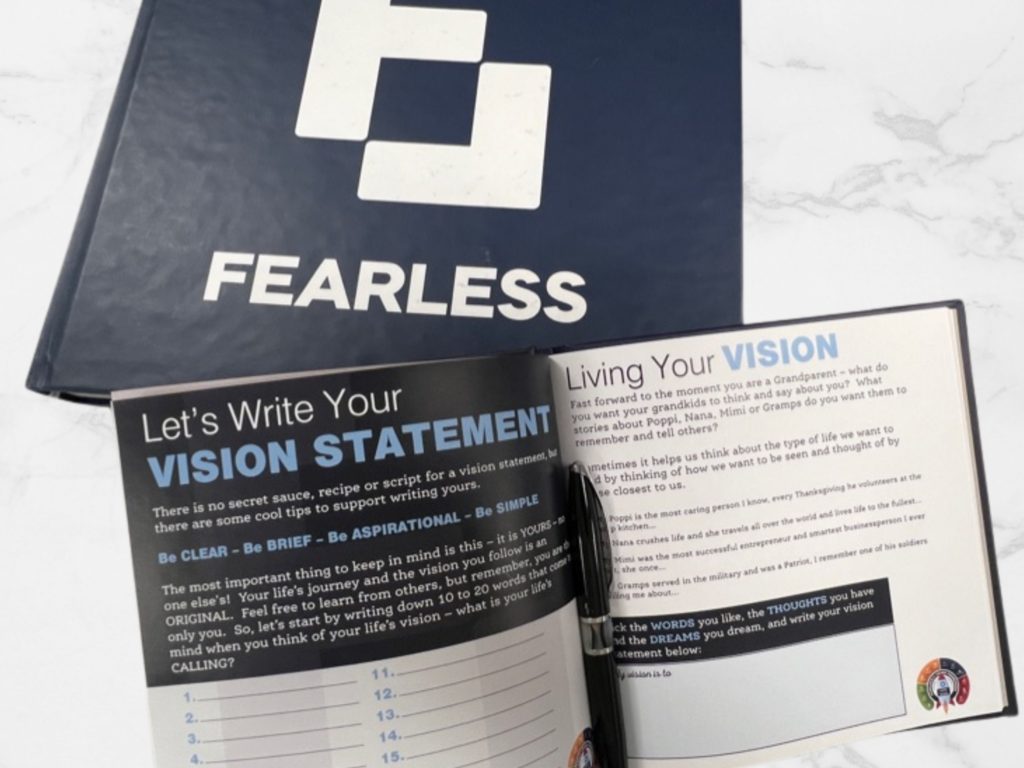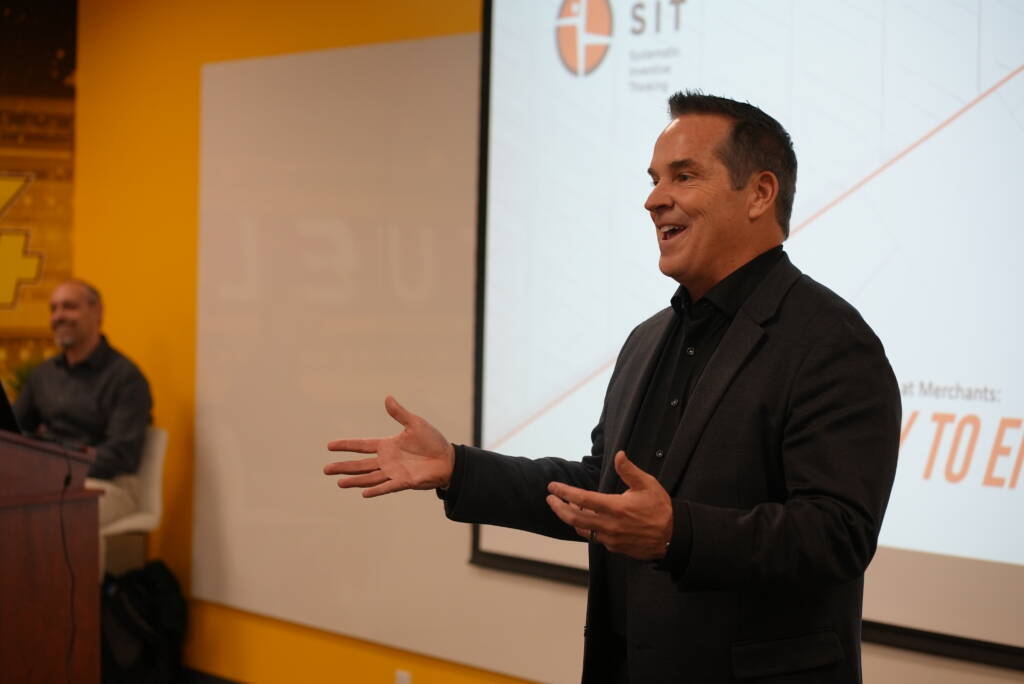More than eighty years after he wrote How to Win Friends and Influence People, Dale Carnegie’s name is still synonymous with influence. Why does it have so much staying power? Because Carnegie’s core principles to build relationships and influence people still hold true today. Here are some of those principles:
- Smile
- Remember names
- Be a good listener
- Become genuinely interested in others
- Make the other person happy about doing the thing you suggest.
Carnegie’s recipe is simple and can be applied to everyone you meet. Carnegie didn’t reach millions of people via social media the way we can today; he grew his influence one person at a time, and you can too. Let’s look at how we can put some of his core principles into practice. I’m going to trust that we all know how to smile. If you haven’t used yours in a while, you may want to dust it off and take it for a test drive—pay attention to see how people respond to you differently.
Actions speak louder than words. A smile says, ‘I like you. I am glad to see you.’
– Dale Carnegie
Remembering a person’s name is incredibly important but can be challenging for some of us. For tips on how to improve the skill, check out 11 Memory Hacks, developed by Jim Kwik, coach and founder of Kwik Learning & Superhero.
Influence Through Active Listening
To be interesting, you must also be genuinely interested in those around you. Active listening is a way of listening and responding to another person that offers an opportunity to engage genuinely with another person and improve mutual understanding. Here are some best practices for active listening.
- Be present: Be fully engaged in the conversation without distractions (e.g., put your phone away, turn away from your monitor, don’t allow others to interrupt). If that’s not possible in the moment, schedule a time when it is.
- Have patience: Allow the other person to share their story at their own pace. Don’t rush the conversation, and don’t begin planning your response while they are still speaking.
- Clarify as needed: If you are not clear on what the other person is saying, don’t just nod and have them move on. Ask them to repeat or explain what you don’t understand.
- Show genuine interest: Ask questions to learn more about the other person’s perspective and the message they are trying to convey. Pay attention to any emotions they attach to the conversation and acknowledge as appropriate, e.g., “How are you handling all of this?”
- Don’t judge: Active listening is about listening for understanding. It is not about making your point known or judging the experience and feelings of another.
- Manage your emotions: If you begin feeling bored with the conversation or frustrated with the other person’s perspective, take a breath and refocus yourself on what the person is saying while reminding yourself that you are listening for understanding of and not agreement with the other person’s perspective
Influence Through Clarity
Ever listen closely to someone and at the end not really know what they mean or what they want you to do? Have you also listened to someone who, no matter how unfamiliar you may be with the topic, you understand exactly what they said? That is the difference between communicating with and without clarity. The more complex the topic the more important communicating with clarity becomes. Here are some best practices for influencing through clarity.
- Be prepared: Do your homework to assure you fully understand the topic you are discussing.
- Understand who your audience is: Most of us speak to multiple people every day in a variety of settings. Whether your audience is family, friends, colleagues, coworkers, clients, or vendors, it’s critical that you understand how they best receive information and provide it in that format whenever possible.
- Encourage questions: Let people know that it’s okay to ask questions if they don’t understand something. Be genuine and kind when you respond to those questions. The onus is on the speaker to make sure their audience understands what they are saying.
- Speak clearly: Articulate your words slowly, clearly, and at the appropriate volume for your audience.
Influence through Inquiry vs. Advocacy
To inquire is an attempt to understand the position of others, rather than change their opinions. Active listening is key. Once you have genuinely listened to and validated the others’ perspective, ask questions that will make your audience contemplate and consider your perspective and possibly reconsider theirs. With the right line of questioning, you will be poised to influence others to action.
Inquiry encourages respect, collaboration, and compromise.
To advocate puts you in a position of “stance.” The goal of advocating is to try to impart or enforce a particular action, position, or set of principles. You are trying to persuade by arguing for the position for which you are advocating.
Advocacy can breed contempt and doubt.
This is not to say that advocacy is the root of all evil. There is a time and place for both approaches; however, advocacy can often interfere and short-circuit communication. Advocacy accounts for a lot of unnecessary conflict, where both sides focus on convincing the other rather than understanding or compromising. The next time you are compelled to advocate, consider whether inquiry might be a better option to achieve your goals.
Who are the people who have positively influenced you? What have they influenced you to do, and how did they influence you? Identify their key traits of influence and reflect on how you can mirror those traits to influence those around you.
Sixty years after his death, Dale Carnegie is still influencing people around the globe. Imagine the ripples of influence you could create if you engaged everyone, every day in this way.














